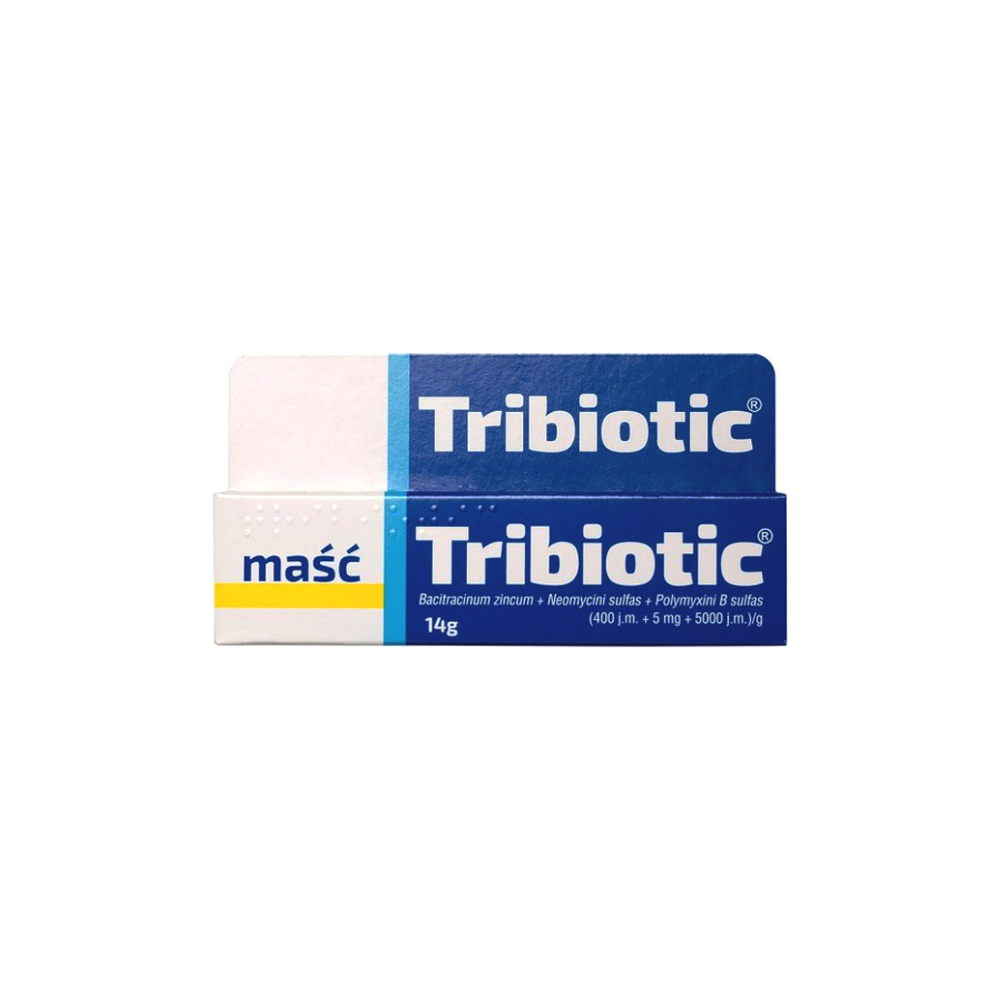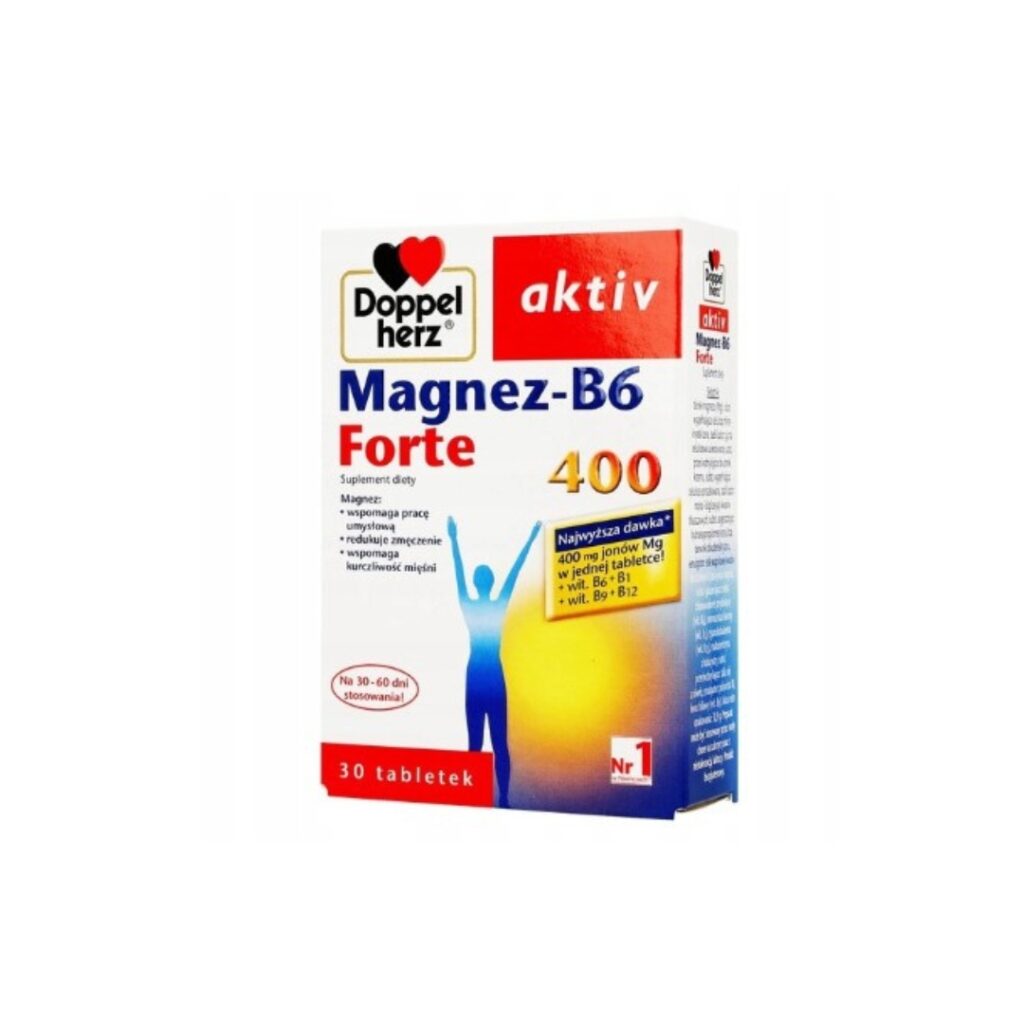Tribiotic 14g
Tribiotic ointment uses the combined action of three bactericidal antibiotics.
- Bacitracin is a polypeptide antibiotic, acting mainly against gram-positive bacteria (including Streptococcus spp.).
- Neomycin – an aminoglycoside antibiotic – works, among others on Enterobacteriaceae (especially Proteus indole-positive and Klebsiella spp.) and Staphylococcus aureus.
- Polymixin B is active mainly against Gram-negative bacteria, especially Pseudomonas aeruginosa and Enterobacteriaceae.
Symptoms
Prevention of the development of bacterial infections in the event of minor wounds, scratches and burns.
Active substance: Bacitracinum zincum, Neomycini sulfas, Polimyxini B sulfas
Composition
| 1g of ointment contains | 400 IU / g zinc bacitracin (Bacitracinum zincum) |
| 5 mg of neomycin sulfate (Neomycini sulfas) | |
| 5000 IU / g polymyxin B sulfate (Polymyxini B sulfas). | |
| Excipient: white petroleum jelly |
Dosage
The preparation is intended for topical application to the skin. The preparation should be used one to three times a day. A small amount of the preparation should be applied to the affected area of the skin, after cleaning and drying the skin. If necessary, a protective, sterile dressing can be used.
Use for no more than 7 days.
Use of the drug in children and adolescents
Do not use in children under 12 years of age due to the risk of nephrotoxic and ototoxic effects.
Contraindications
Do not use the drug:
- in hypersensitivity to zinc bacitracin, neomycin sulfate, polymyxin B sulfate or to any of the excipients of the preparation,
- in children under 12 years of age due to the risk of nephrotoxic and ototoxic effects,
- on mucous membranes,
- on a large area of damaged skin,
- for deep or stab wounds, severe burns,
- for eyes,
- for oozing skin lesions.
LDPE tubes or aluminum tubes with a PP screw cap containing 14 g of ointment, placed in a cardboard box.
Storage method:
15°C-25°C
Manufacturer:
KATO
Warnings
Use of the drug should be discontinued if there is no improvement, worsening of symptoms or symptoms of hypersensitivity, including skin symptoms such as rash, itching, irritation symptoms.
In the case of severe allergic reactions, the preparation should be discontinued immediately.
Patients allergic to any aminoglycoside or polymyxin antibiotic may be allergic to other aminoglycosides or polymyxins. Treatment should be discontinued in the event of severe allergic reactions.
Applying the drug to large areas of damaged skin can cause hearing loss, kidney damage and the development of neurotoxic symptoms.
The preparation should be used with particular caution in patients with impaired renal function or hearing impairment.
The risk of nephrotoxicity and ototoxicity of the preparation in patients with impaired renal function is greater.
Tribiotic preparation may have the effect of simultaneously used nephrotoxic or ototoxic preparations.
Pregnancy and breastfeeding
The active substances of the preparation, especially neomycin, may have a harmful pharmacological effect on the course of pregnancy or the development of the fetus / newborn baby. Due to the lack of appropriate tests, the drug should not be used during pregnancy and in breast-feeding women.
Interactions with other drugs
If the active substances are absorbed after applying the ointment to a large area of the skin or damaged skin, interactions with other drugs administered at the same time may occur. Concomitant use with orally administered neomycin may increase the risk of hypersensitivity.
Do not use the preparation simultaneously with drugs that can damage the kidneys and hearing, such as strong diuretics (e.g. furosemide, ethacrynic acid). These drugs, administered simultaneously with aminoglycoside antibiotics, increase their concentration in the blood, which increases the risk of hearing impairment, including deafness, which can occur even after discontinuation of the drug.
Cross-allergic reaction to other aminoglycoside antibiotics may occur when neomycin is applied concomitantly to the skin. When administered simultaneously orally or topically, aminoglycoside antibiotics or other drugs with a potential nephrotoxic or neurotoxic effect may result in additive side effects.
Side effects
Ear and labyrinth disorders: ototoxicity
Infections and infestations: infection with resistant bacteria or Candida yeast.
Immune system disorders: general symptoms of hypersensitivity and local symptoms such as rash, itching, irritation symptoms.




